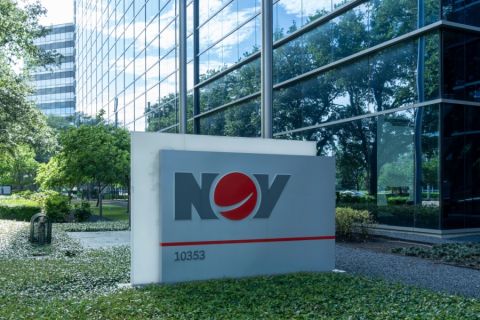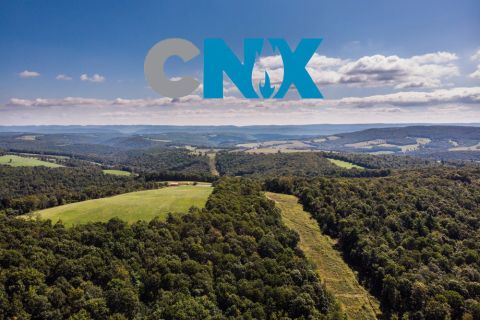
The future of U.S. oil output hinges on E&P capital discipline and well productivity trends in the Permian Basin, according to McKinsey & Co. (Source: Shutterstock)
U.S. oil production is coming off a record high. But the future of U.S. oil output hinges on several evolving factors, including E&P capital discipline and Permian Basin well productivity, according to a McKinsey & Co. analysis.
Oil and gas producers—and particularly public E&Ps—are not blindly throwing capex into the dirt when commodity prices spike, as some operators opted to do in previous cycles, McKinsey Partner Luciano Di Fiori said during a Feb. 7 presentation at the 2024 NAPE Summit.
“Historically when oil prices went up, we see oil rigs shooting up very quickly,” Di Fiori said. “That hasn’t been the case over the past two or three years.”
The total Permian Basin rig count fell by 24% from January through November of last year despite rising commodity prices, according to East Daley Analytics.
By and large, most U.S. E&Ps are planning to keep output relatively flat this year compared to last. Companies are choosing to return cash flow to shareholders through dividends and stock buybacks, rather than drilling more wells to grow production.
Public operator spending on drilling still hasn’t rebounded from levels seen before the COVID-19 downturn, Di Fiori said.
“Essentially, you’re funding your capital with your own operations—instead of going to the [corporate debt] market,” he said.
Private drillers have responded much more quickly to increases in oil and gas prices—but many of the largest private producers are being acquired by bigger operators seeking quality drilling locations.
The value of fourth-quarter upstream oil and gas dealmaking was approximately $144 billion, according to Enverus Intelligence Research. Full-year 2023 deals totaled $192 billion.
And two deals made up the lion’s share of the M&A market: Exxon Mobil’s deal to buy Pioneer Natural Resources for $65 billion, and Chevron’s announced acquisition of Hess Corp. for $60 billion.
In the oilfield, E&Ps are pacing themselves with their inventory. Most are not in a hurry to drill through their best rock; preserving already scarce drilling locations has become the name of the game across the industry.
Many acquisitive public E&Ps have drastically slashed drilling activity on new assets after deals close, with inventory preservation as the goal of a buy-and-cut strategy being deployed across the shale patch.
Whether public E&Ps will continue their financial discipline, or choose to spend more on drilling if commodity prices rise to more tempting levels in the future, it will affect the U.S. production roadmap, Di Fiori said.
RELATED
Analysts: Permian Basin Rigs Plummeted on Record Upstream M&A
Shale tales
Any conversation about U.S. oil and gas production automatically includes the Permian Basin—the nation’s top oil-producing region.
When it comes to drilling for tight shale oil, Permian wells offer some of the lowest drilling costs and the highest returns in the U.S. Lower 48.
Other areas, such as the Bakken or the Eagle Ford Shale, are more expensive to drill for less prodigious oil wells.
But as time goes on, and E&Ps keep drilling, Permian wells don’t appear to be getting that much better. New well productivity in Lea County, New Mexico—in the core of the Permian’s Delaware Basin—dropped by 16% over two years, despite a small increase in average lateral lengths, according to a Novi Labs analysis.
“We’re starting to see that the Permian is plateauing on productivity levels and on improvements to productivity,” Di Fiori said.
McKinsey is monitoring rock quality degradation in the Permian to predict if the basin’s productivity could eventually start to come down—or if new drilling techniques can boost output, he said.
U.S. oil production is estimated to have reached an all-time high of 13.3 MMbbl/d in December 2023, according to Energy Information Administration data.
However, output fell to 12.6 MMbbl/d in January due to shut-ins related to cold weather snaps across the nation.
Despite booming U.S. production, domestic demand for oil appears to have peaked after a small rebound following the COVID-19 lockdown, Di Fiori said.
But oil demand is expected to continue growing globally for decades as demand increases for transportation fuel, plastics and chemicals in other parts of the world, according to McKinsey.
RELATED
Shale Outlook: Scarce Inventory to Drive Upstream M&A in ‘24
Recommended Reading
NOV Announces $1B Repurchase Program, Ups Dividend
2024-04-26 - NOV expects to increase its quarterly cash dividend on its common stock by 50% to $0.075 per share from $0.05 per share.
Repsol to Drop Marcellus Rig in June
2024-04-26 - Spain’s Repsol plans to drop its Marcellus Shale rig in June and reduce capex in the play due to the current U.S. gas price environment, CEO Josu Jon Imaz told analysts during a quarterly webcast.
US Drillers Cut Most Oil Rigs in a Week Since November
2024-04-26 - The number of oil rigs fell by five to 506 this week, while gas rigs fell by one to 105, their lowest since December 2021.
CNX, Appalachia Peers Defer Completions as NatGas Prices Languish
2024-04-25 - Henry Hub blues: CNX Resources and other Appalachia producers are slashing production and deferring well completions as natural gas spot prices hover near record lows.
Chevron’s Tengiz Oil Field Operations Start Up in Kazakhstan
2024-04-25 - The final phase of Chevron’s project will produce about 260,000 bbl/d.




